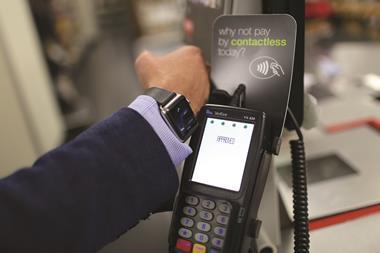As retail evolves to support a complex omnichannel experience, the store associate’s role is changing. But what can retailers do to maximise their value?
Understanding in-store activity
While retailers generally offer click-and-collect and the option to buy online and return in store, increasingly empowered customers expect a store associate to provide a more engaging and personal experience.
“The majority of retailers have no insight into the way store associates spend their time and no way of determining how to optimise their activity”
But where does that leave the store associate, now tasked with multiple roles from fulfilling click-and-collect orders to managing inventory, replenishing shelves and selling?
How can a retailer manage these diverse in-store activities to maximise productivity and efficiency, and achieve a great customer experience?
Does the retailer have the tools to react to real-time demands, such as in-store order fulfilment, and are they able to manage and prioritise store resources? How much time is being spent on these activities?
Are retailers setting new key performance indicators (KPIs) that reflect the new in-store complexity? For example, do staff prioritise greeting a customer over replenishing stock or simply wait for a customer to make the first approach?

Right now, the majority (69%*) of retailers have no insight into the way store associates spend their time and, therefore, no way of determining how to optimise their activity.
Those retailers that can monitor activity found store associates typically spend 30% of their time managing inventory and replenishment in the back of the store.
Customers’ changing expectations and behaviour, along with the fact that for almost a third of their time store associates are not customer-facing, have significant implications for in-store revenue and long-term loyalty.
Customers are simply more empowered and impatient; they check products online before entering a store, and if a product is not on the shelf the vast majority will just walk back out.
If they do ask a store associate, they want information fast, with 30% prepared to wait less than two minutes for information and 70% leaving within five.
Empowering associates
Store associates need a real-time view of inventory – achieved by just 36% of retailers to date – and preferably via a mobile device to ensure a customer query can be answered on the shop floor.
In addition, streamlining logistics processes, such as inventory receipting and automated flagging of inventory gaps on the shelf, can reduce time spent handling stock.
“Retailers need to become far more prescriptive about each employee’s objectives, setting clear KPIs for each task”
Critically, it’s about leveraging real-time information to improve task management and using this information to dynamically prioritise and allocate the task activities of store associates.
Retailers need to become far more prescriptive about each employee’s objectives, setting clear KPIs for each task. Improving these tasks will also require improved analytics and insight into the overall store performance.
By analysing all store associate activity and assessing its impact on the store’s overall revenue, a retailer can undertake continual reassessment and optimisation of task management.
This in turn will get the most out of each staff member in store and increase their value for the business and its customers.
*From Zetes’ ‘Understanding the Role of the Store in Omni-channel Retailing’ report, May 2017
Gareth Thomas is retail business consultant at Zetes


























No comments yet